Confessions of an Antediluvian Geek - A personal history of computing
Part Two - The Aroma of Programming
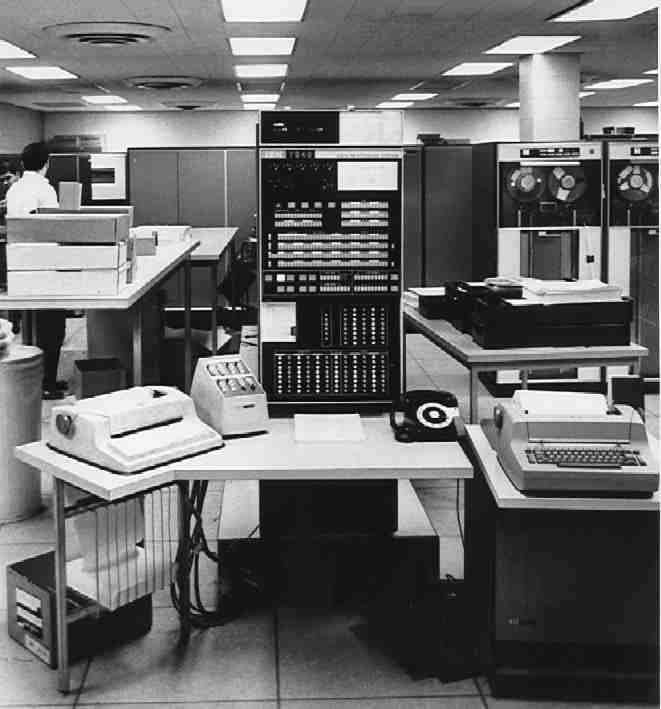 The first computer that I had a chance to use was an IBM 7044. A behemoth of a machine, but not
the IBM top-of-the-line.
The 7044 took up an entire room, and generated a lot of heat. This computer, like all computers
of that day, ran programs using a system called "batch processing". The computer could only run one program at a time,
so a batch of programs were set up, and the computer ran the first one until it was done, and then it ran
the next, and so on.
The first computer that I had a chance to use was an IBM 7044. A behemoth of a machine, but not
the IBM top-of-the-line.
The 7044 took up an entire room, and generated a lot of heat. This computer, like all computers
of that day, ran programs using a system called "batch processing". The computer could only run one program at a time,
so a batch of programs were set up, and the computer ran the first one until it was done, and then it ran
the next, and so on.
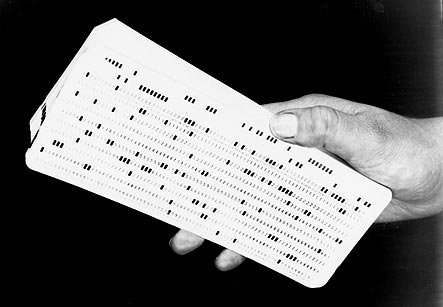 So how did I write the programs, and how did I get them into the computer? Slowly.
To write a program, you used something called a "coding form". This was a pad of paper, with
lines printed on it that indicated the individual columns of something called a "punched card".
Punched cards were cards about 3 inches by 7, and were made and used in the billions. At one time
IBM had plants that turned out huge numbers of cards every day. Each card could hold 80 characters,
which were encoded onto the cards as a set of little rectangular holes. Programmer's and computer
people's entire careers were surrounded by punched cards.
So how did I write the programs, and how did I get them into the computer? Slowly.
To write a program, you used something called a "coding form". This was a pad of paper, with
lines printed on it that indicated the individual columns of something called a "punched card".
Punched cards were cards about 3 inches by 7, and were made and used in the billions. At one time
IBM had plants that turned out huge numbers of cards every day. Each card could hold 80 characters,
which were encoded onto the cards as a set of little rectangular holes. Programmer's and computer
people's entire careers were surrounded by punched cards.
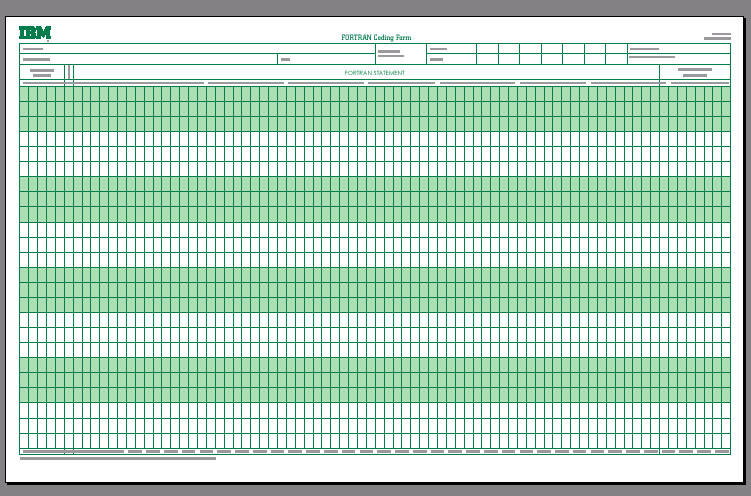 The coding forms were often tailored to the particular programming language that you were using.
Programmers spent most of their time with pads of coding forms and a pencil, meticulously writing
the program on the coding form, one character in each little box, carefully erasing any mistakes,
or, if you had too many erasures, re-writing the entire page.
Usually, after a really long programming session, your fingers ached, and the heel of your palm
was green.
The coding forms were often tailored to the particular programming language that you were using.
Programmers spent most of their time with pads of coding forms and a pencil, meticulously writing
the program on the coding form, one character in each little box, carefully erasing any mistakes,
or, if you had too many erasures, re-writing the entire page.
Usually, after a really long programming session, your fingers ached, and the heel of your palm
was green.
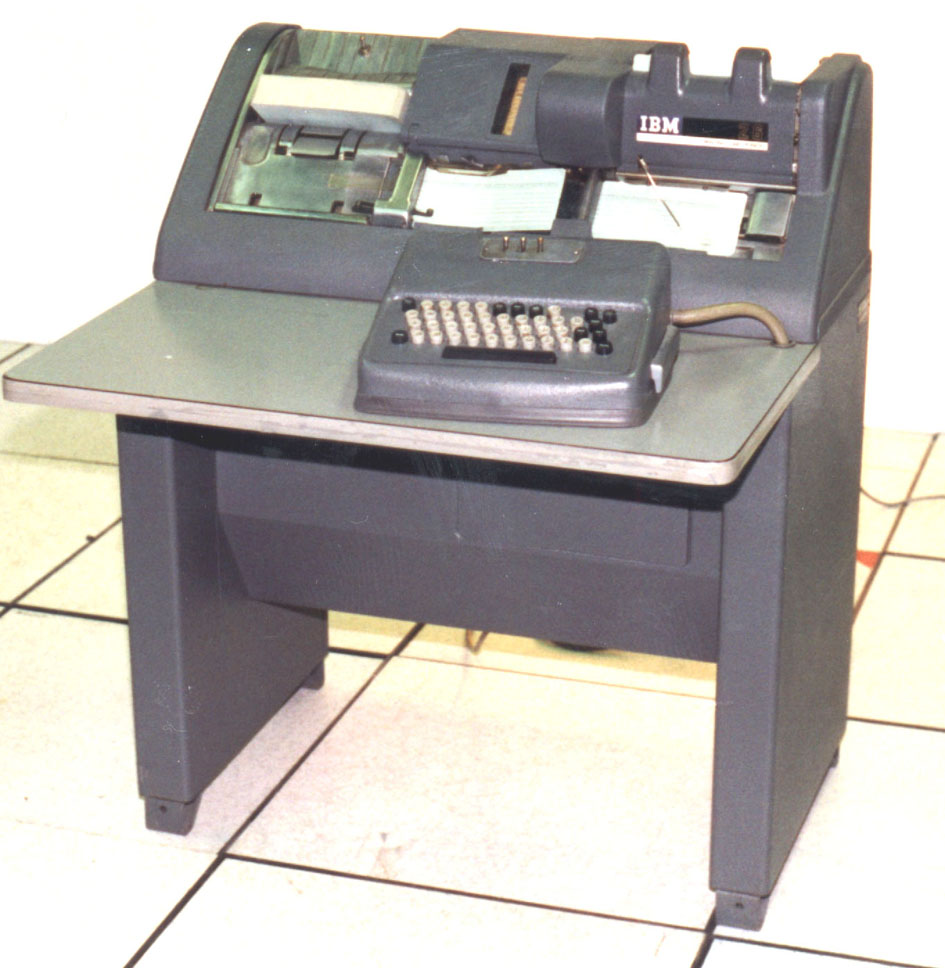
When you were done, if you worked for a real company (as opposed to being a lowly student, like I was), you then sent the coding forms to "the keypunch department". In most companies that used computers, there was a department consisting of a group of "keypunch operators", who were usually women. They were sort of glorified typists. They would read your coding forms, or any other document that had to be punched into cards, and type into a machine called a "keypunch", which punched the little rectangular holes into the punched cards.
This would take between several hours, to several days. When you got back the cards, you usually found typing errors, and had to make corrections. If you didn't work at a big company, but were a lowly student, you went into a room next to the computer room which was filled with punched card equipment. There were machines that did sorting, collating, tabulating, reproducing, and most importantly, one or more keypunches. These were usually there for the programmers and operators to use. Us lowly students would punch our own programs into the cards. Then we would feed them into something called an IBM 407 Tabulator, which was really just a fancy card printer, which printed a paper listing of what was punched into the cards. We then looked over the listing looking for errors. You didn't wait for the computer to do this, because computer time was expensive and precious.
Once you thought you were ready, you submitted the program to the computer. This usually meant that you wrote your name on the deck of cards somewhere, and placed them on a table next to the computer room. Sometimes there was a little window, like in a doctor's office, where you would hand the deck to someone inside the computer room. Programmers were never allowed in the computer room. Computer operators thought that programmers were the scum of the earth. Strangely, programmers thought the same thing about Computer Operators. After submitting your program, you waited, usually for several hours - possibly for several days. If you were a professional programmer, working for a real company, you worked on several programs simultaneously, otherwise you would spend most of your time doing nothing while waiting for your stuff to come back from keypunch or the computer room. "Turnaround time", it was called. You would be coding one or two, while one or two others were being keypunched, while one or two others were waiting for the computer to check them for errors, while another one was waiting to be tested.
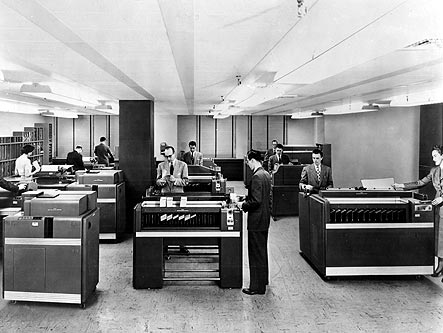 I spent a lot of time in
the rooms with all the punched card equipment. This equipment dated from an era before computers,
when a lot of the computing functions were done by punched card machines, where sorting, merging,
collating, tabulating and so on were basically manual operations, involving tens of thousands of
punched cards.
I spent a lot of time in
the rooms with all the punched card equipment. This equipment dated from an era before computers,
when a lot of the computing functions were done by punched card machines, where sorting, merging,
collating, tabulating and so on were basically manual operations, involving tens of thousands of
punched cards.
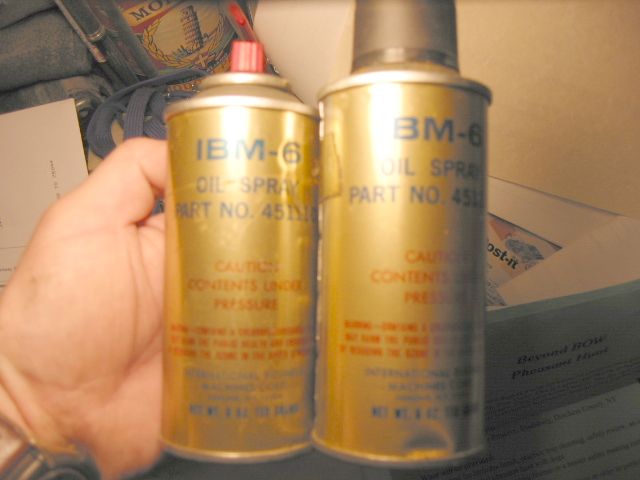 These machines were mostly mechanical, with very little electronics. They had
thousands of little moving parts, all needing lubrication.
If you looked inside these machines,
every surface and part was covered with a thin film of a machine oil. I don't know what kind of
oil they used, but it had a pleasant, perfume-like fragrance. Many of my early memories of programming contain a
fond recollection of this aroma. For me, it was the aroma of programming.
These machines were mostly mechanical, with very little electronics. They had
thousands of little moving parts, all needing lubrication.
If you looked inside these machines,
every surface and part was covered with a thin film of a machine oil. I don't know what kind of
oil they used, but it had a pleasant, perfume-like fragrance. Many of my early memories of programming contain a
fond recollection of this aroma. For me, it was the aroma of programming.
Copyright © 2007 by Jeff Kravitz
